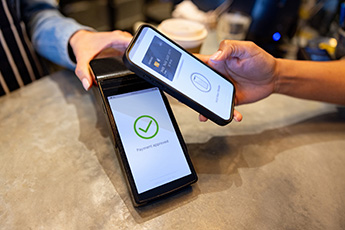Do you remember hearing about putting pepper on a toddler’s thumb to stop them from sucking it? Sometimes it takes a negative event or experience to trigger certain behaviors. In today’s case, the pandemic certainly triggered specific customer behaviors. The pandemic accelerated industry trends and changed consumers’ banking and payment habits, says a study done by Javelin Strategy & Research. Despite their beginnings in a time of tremendous stress, these changes have created openings for financial institutions to bring in more business. Digital banking increased. Banking customers were already doing less of their banking in person, but lockdowns and quarantines intensified that trend. During the pandemic, customers started doing 69% of their banking online; mobile banking increased to 28%. Businesses accept more forms of payment. Other kinds of virtual transactions also increased. More businesses began accepting online payments; the numbers went from 37% to 47%, according to Javelin’s study. Businesses accepting mobile payments went from 16% to 19%, and those accepting digital payments of all kinds went from 45% to 53%. In general, businesses expanded the forms of payment they accept. In the study, businesses accepting credit cards increased from 46% to 60%. Debit card acceptance went from 29% to 37% and other electronic payments, including Zelle and Venmo, from 2% to 14%. Zelle For Business, which sprouted off from what was originally a consumer-only payments vehicle in 2018, accounted for much of that increase.Customers have given community financial institutions (CFIs) points for responsiveness during the pandemic. Even so, some of them lost payment processing and credit card business to nonbank providers, including Kabbage, PayPal, and Square. Where can CFIs find opportunities? Javelin’s analysts point to five of them.Five opportunities for CFIs
- Offer customers a quick, simple, digital way to open a business account. Just 8 of the top 30 big banks offer this, even though it’s a significant convenience for the account holder.
- Address cash flow analysis and projection, which is a top pain point for many small business customers. Giving business owners insight into when cash flow might be tight and helping them borrow accordingly would be a valuable service and an opportunity to become a trusted resource.
- Look for ways to serve freelancers and sole proprietors. Almost 30% of Americans were self-employed in 2019, according to a Gallup survey and that number continues to climb. CFIs could help these people manage cash flow and invoicing, as well as tying invoicing to payments, through offerings that are relatively simple and offer good value for the cost.
- Help businesses move to digital invoicing by embedding invoicing tools within your banking app, and integrating it with reconciliation. Less reliance on checks gives customers faster access to their money and smoother bookkeeping.
- Assist business customers as they navigate PPP forgiveness. In the Javelin study, 57% of respondents felt less than entirely comfortable handling the process, and 72% would accept help from their PPP lender. This could become even more important as a new round of PPP lending is here, as we reported in yesterday’s article.




